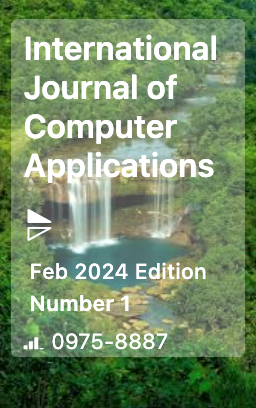Reseach Article
Generative AI for Cinematic Adaptation: Transforming Classic Novels into Short Films, Animations, and Deepfake Reenactments
| Journal of Advanced Artificial Intelligence |
| Foundation of Computer Science (FCS), NY, USA |
| Volume 2 - Number 2 |
| Year of Publication: 2025 |
| Authors: Anshu Khobragade |
 10.5120/jaai202446
10.5120/jaai202446
|
Anshu Khobragade . Generative AI for Cinematic Adaptation: Transforming Classic Novels into Short Films, Animations, and Deepfake Reenactments. Journal of Advanced Artificial Intelligence. 2, 2 ( Sep 2025), 1-5. DOI=10.5120/jaai202446
Abstract
The process of adapting great works of literature to film has long been limited due to cost, constraints on interpretations, and access issues. However, advances in generative artificial intelligence (such as text to video, animation synthesis, and deepfake) present exciting possibilities for the adaptation landscape. This study explored AI adaptations of Pride and Prejudice, Frankenstein, and Great Expectations, used generative models to consider how the generative media retains fidelity to the text, and used creative means to suggest style and themes from the literary works. This research used a mixed methods evaluation scheme to assess AI adaptations of text, with four assessments by engaged literary scholars and filmmakers: narrative fidelity, visual and stylistic, innovative work, and ethically responsible engagement. The results indicate that generative AI can replicate complex multi-modal narratives in literature into film from a fidelity point of view, while offering new visual possibilities and affording opportunities for reducing the cost of adaptation. A structured comparative analysis set across three primary graphic genres or registers: Romantic realism, Gothic horror, and Victorian social critique; the study found that AI was able to adapt to complex literary styles and notions of style. Ethical boundaries governing controlled deepfake use and copyright compliance ensured ethical engagement. Moving forward, this study is situated generatively AI as a technical and creative tool. This scholarship adds to the growing body of applied AI research, provides useful design principles, and creates interdisciplinary work between artificial intelligence, film, and literature.
References
- L. Hutcheon, A Theory of Adaptation. New York: Routledge, 2006.
- R. Stam, Literature through Film: Realism, Magic, and the Art of Adaptation. Oxford: Blackwell, 2005.
- A. Ramesh, C. Pavlov, G. Goh, S. Gray, C. Voss, A. Radford, and M. Chen, “Hierarchical textconditional image generation with CLIP latents,” arXiv Preprint, arXiv:2204.06125, 2022. [Online]. Available: https://doi.org/10.48550/arXiv.2204.06125
- H. Zhang, C. Wu, Z. Li, and Y. Yang, “Diffusion models for video generation,” IEEE Trans. Pattern Anal. Mach. Intell., vol. 45, no. 5, pp. 6002–6017, 2023. [Online]. Available: https://doi.org/10.1109/TPAMI.2023.3241125
- U. Singer, A. Polyak, T. Hayes, X. Yin, J. An, et al., “Make-AVideo: Text-to-Video Generation without Text-Video Data,” arXiv Preprint, arXiv:2209.14792, 2022. [Online]. Available: https://doi.org/10.48550/arXiv.2209.14792
- T. Brooks, A. Holynski, and A. A. Efros, “Generating long videos of dynamic scenes,” in Proc. IEEE/CVF Conf. Comput. Vis. Pattern Recognit. (CVPR), 2023, pp. 3132–3141. [Online]. Available: https://doi.org/10.1109/CVPR52729.2023.00310
- OpenAI, “Introducing Sora: Text-to-video generation,” OpenAI Blog, 2023. [Online]. Available: https://openai.com/research/sora
- J. Elkins and W. H. K. Chun, Machine Vision and Creative Culture. New York: Routledge, 2022.
- L. Manovich, Cultural Analytics. Cambridge, MA: MIT Press, 2020.
- R. Chesney and D. K. Citron, “Deep fakes: A looming challenge for privacy, democracy, and national security,” Calif. Law Rev., vol. 107, no. 6, pp. 1753–1819, 2019. [Online]. Available: https://doi.org/10.15779/Z38R49G254
- Y. Mirsky and W. Lee, “The creation and detection of deepfakes: A survey,” ACM Comput. Surv., vol. 54, no. 1, pp. 1–41, 2021. [Online]. Available: https://doi.org/10.1145/3425780
- J. Kietzmann, L. W. Lee, I. P. McCarthy, and T. C. Kietzmann, “Deepfakes: Trick or treat?” Bus. Horizons, vol. 66, no. 1, pp. 15–28, 2023. [Online]. Available: https://doi.org/10.1016/j.bushor.2022.08.002
- L. Floridi, “AI and its new winter: From myths to realities,” Philos. Technol., vol. 35, no. 4, pp. 1–6, 2022. [Online]. Available: https://doi.org/10.1007/s13347-022-00553-0
Index Terms
Keywords

